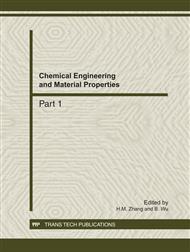p.18
p.23
p.28
p.32
p.37
p.42
p.46
p.51
p.56
Theoretical Account for the Bimetallic Bonding of the Copper Clad Aluminum Wire by Clad-Drawing at Room Temperature
Abstract:
By analysis of the theoretical calculation, it is obvious that the bimetallic bonding of the copper clad aluminum wire by clad drawing at room temperature is the action results of collective gravitation of a great lot of two metal surface atoms reciprocally by outside force. The interatomic potential energy of the closer atoms of two metal surfaces is obvious lower, so as to change for electron within the distance. The interdiffusion of the bimetallic surface atoms by clad drawing at room temperature, is good for improving the bond strength, but is not necessary.
Info:
Periodical:
Pages:
37-41
Citation:
Online since:
December 2011
Authors:
Price:
Сopyright:
© 2012 Trans Tech Publications Ltd. All Rights Reserved
Share:
Citation:


